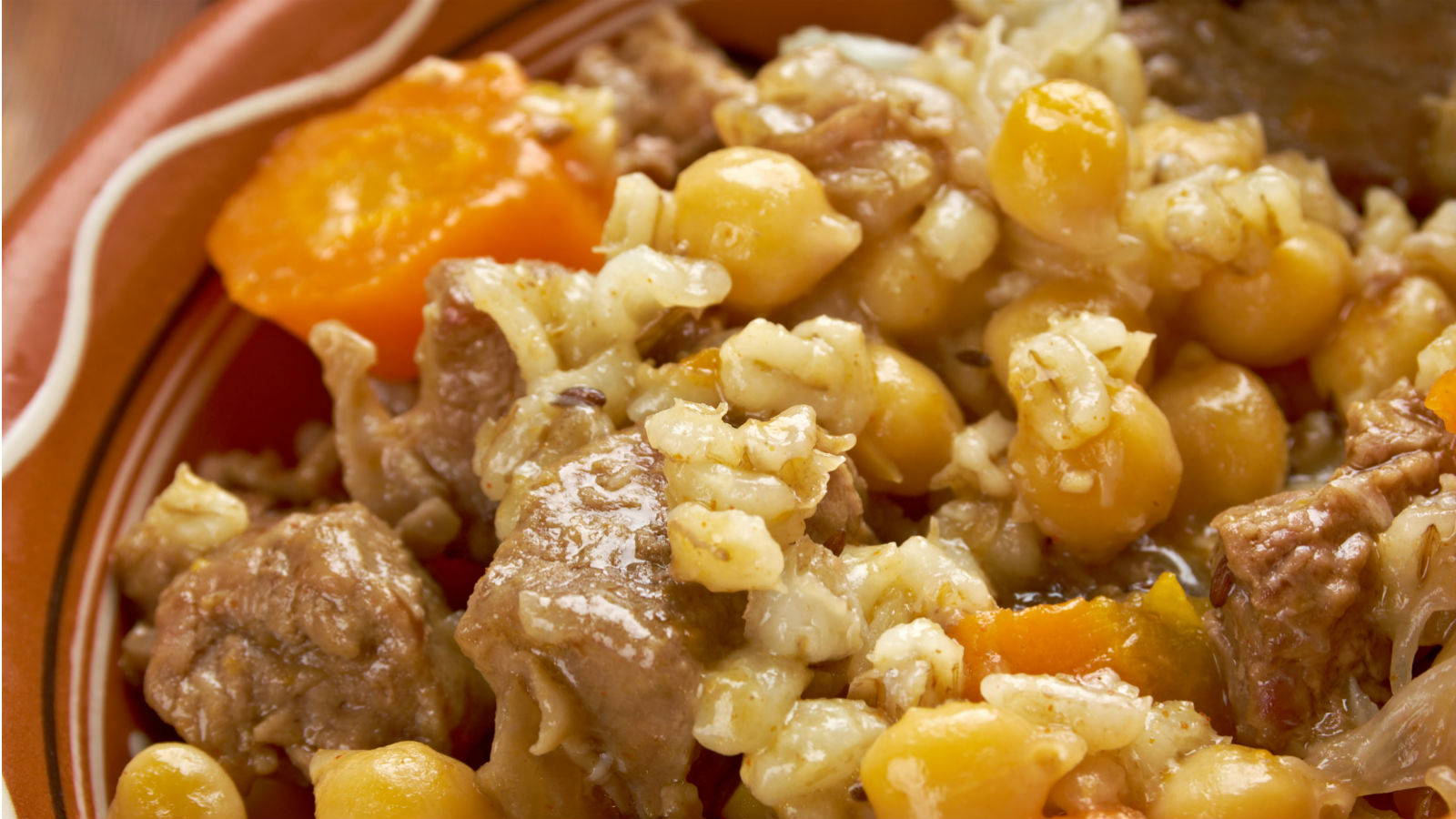All my life, I’ve been obsessed with cholent.
In my childhood home, we never had this rustic stew of meat and beans that many Jews make in a crockpot each Shabbat. My mother is descended from the Bene Israel Jews of Mumbai, so our weekly staples included chicken curry, rice and chapatti. When I was young, I took Indian food for granted, found it boring. As I got older, it was an awkward reminder that we were different. When I finally grew up and out, Indian food evolved too, and took its place as the most wistful of comfort foods.
Cholent, on the other hand, remained an unchanged fantasy, a perfect and constant curiosity for me. Cholent was what “regular” Jews ate. Its fragrance consumed the halls of synagogues and rabbi’s homes with a sort of importance. And though I only happened upon a taste of it every now and then, I was full of marvel and questions. What ingredients actually went into it? How to make sense of all the accessories — the kishkes and kugels and such? How could anything possibly cook for so long? The drawn-out process alone made it seem like a cauldron of brew from a fairy tale.
Especially as an adult, I was drawn to the cholent pot, and not the least for its practicality. It could be the unicorn of meals, when done right — simple, filling, needing little effort. And yet, because it did not run through my blood, I found cholent never tasted quite right when I made it. I didn’t have a tried-and-true recipe to use. I did my research cold and online, constantly looking for the tricks, the secret ingredients, the perfect family recipe of some other perfect family. Filled with doubt, I improvised with blogger methods that seemed gimmicky, like adding a can of coke, or letting the whole stew cook in a plastic bag. I threw in eggs one time, a Yemenite jachnun or chopped Italian sausages the next, without any real sensibility or system. And I was never very surprised when I ended up scraping the sorry crust from the pot: This food was never really mine to begin with.
The Nosher celebrates the traditions and recipes that have brought Jews together for centuries. Donate today to keep The Nosher's stories and recipes accessible to all.
Outside the kitchen also, cholent became a sore spot. I wrote about cholent in my most recent novel “Consider the Feast,” burdening my main character Talia with uncooperative cholent, too. If I had to struggle, so would she.
For a long time, my cholent was something only my family had to suffer through. Yet recently, deliberately, I started making cholent for guests, too. Perhaps a little part of me hoped the dish would unexpectedly turn out delicious. But mostly, I was fed up with the fantasy. It was really a throw-down. And the act of inviting people to partake of it was almost a bluff, a dare, a defiant way of putting the onus of it on others, too: No good — right? Now tell me how to make it better.
And with that, pulling my community into the conversation, something changed. Somehow, my cholent turned a corner. One friend told me you need to mix the kishke right in. Another said, you need bone marrow for the right thickness, and flanken meat. Only a few beans, more barley. Also, chicken stock, not beef. Suddenly, I found, my cholent could be quite tasty after all. In the end, it seemed, cholent was not going to be a recipe that was mine or a recipe that was Other. It could only ever be all of us together there, in the pot.



